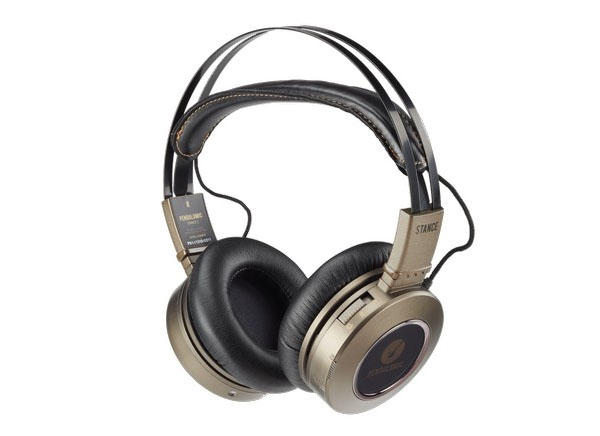| Columns Retired Columns & Blogs |
Bluetooth Headphone/Headset Survey Review - Pendulumic Stance S1

Pendulumic Stance S1 ($199)
Arriving on the scene about a year and a half ago, Pendulumic intends to produce a high-quality wireless listening experience at a low price, and have been promoting these cans at THE Show Newport and CanJam@RMANF as a good choice for enthusiasts. I found them a bit of a mixed bag.
The styling of the Stance 1 is a bit old school and ordinary, but I think I prefer it over the other $199 headphones in this survey. The finish on plastic parts is a nice dark-copper semi-matte paint. Headband and ear pads are a good grade of protein leather. Slide switches are a bit clunky looking but quite functional. A multi-function knob on the back of the right earpiece performs volume control, play/pause, track forward, and phone answer/end functions.
Headband caliper pressure, ear cup size, and headband tension all seem to well thought out, and I found the Stance 1 a comfortable headphone for long listening sessions. Bluetooth pairing was painless initially, and virtually invisible in subsequent pairings. Ear pads rotate flat for storage in the included, hard-side case. Overall, the Pendulumic Stance S1 is a comfortable and ergonomic headphone despite it's somewhat pedantic look.
The Stance S1 can operate in wired passive, wired active, and BT wireless modes. I found them to sound virtually identical in the passive and wireless modes, but found them overly withdrawn and muddled sounding when used active on the wire. The Stance 1 has two batteries: one internal rechargeable battery; and a compartment in which you can put two additional AAA batteries. Battery life is stated at 30 Hours on Pendulumic's web site; it seems this number includes both batteries.
Sound quality of the Pendulumic Stance S1 in wireless mode is good with one exception: It's got very little bass extension. Balance of the mids and treble is good—vocals are a tad veiled, but remain nicely detailed. Just a touch of splashiness around high frequency details mars an otherwise fairly good mid- and upper-treble response. Unfortunately, the bass weight was so limited that I had a hard time really enjoying the music.
Isolation was the poorest of this group of headphones, so poor that I would consider these a home or office headphone rather than a mobile headset. The other thing I found was that while walking, each footfall would cause the headphones to bounce down on my head slightly, resulting in the headband cushion temporarily stretching out a bit. When it did so it would make a bit of low frequency noise from the stiction between the pad and the elastic within. I found it bothersome when walking around.
Click on graphs image to download .pdf for closer inspection.
Raw FR response plots show some modest changes with position, but tonal balance overall was little changed. Compensated plots show a headphone with fairly good response between 100Hz and 2kHz. Below 100Hz we see the natural 12dB/octave roll-off below the primary driver resonance. This looks more like an open headphone than a sealed one, and the significant lack of isolation supports, to me, the idea that these cans are not using some of the acoustic properties available with sealed headphone to improve bass response.
Left and right channels in the 3kHz-4kHz area show some differences that might be due to slight differences in the shape and volume in the ear capsule behind the driver to accomodate electronics and batteries.
30Hz square wave has an extreme swayback that returns to the zero line before the next cycle. The extreme sway back is due to rapidly changing phase as the driver goes through its primary resonance, and the return to zero before the next cycle is indicative of poor bass extension.
300Hz response has decent shape, but should have a cleaner leading edge transient and less following noise. Significantly different left/right channel response is likely related to the two peaks in the FR at 3kHz and 4kHz, probably due to different size and shape internal volumes of the two ear capsules.
Above 200Hz, THD+noise plots are quite good. I did hear the Stance S1 as being fairly clean sounding through the mid-range and low treble. Elevated THD+noise below 200Hz is significant, but may possibly arrise as a byproduct from the every lowering bass volume as frequency goes down, raising the signal to noise ratio. I didn't hear any low bass distortion...but I also didn't hear much low bass at all.
Isolation is the lowest of all the headsets in this test at -7dB attenuation. This headphone will not provide enough isolation as a portable headphone in metro conditions.
- Log in or register to post comments





































